Rule of Law? Or rule by judges? Do police officers have human rights? What has a case about police officers’ identification numbers got to do with a law against torture?
These questions had curious answers in 2020 declaratory judgments in Hong Kong. Henry Litton looks back at some unusual legal logic.
A PRINCIPAL TENET of the common law is that courts never act in vain. An order is an order. When an order is made, effective action must follow, adjudicating the rights and obligations of the parties. It cannot just dissolve into a cloud of words. This simple principle is often either misunderstood, ignored, or downright flouted by the High Court in Hong Kong.
Take the cluster of five cases heard together in that court in June 2020, with judgment handed down on 19 November 2020 [HCAL 1747, 1753, 2671, 2703 and 2915/2019].
These were applications for leave to start proceedings for judicial review, with the Commissioner of Police as putative respondent in all cases, and the Secretary for Justice added as putative respondent in the last.
They seek leave from the High Court to raise two questions:
(1) whether new protective outfits worn by special units of the police force sufficiently identified the individual officers taking part in anti-riot operations, and what were the consequences if they did not, and
(2) whether the statutory arrangement to deal with complaints against the police, which had been standing in the statute book and acted upon for some considerable time was nevertheless “unconstitutional”.
THE APPLICANTS’ ALLEGATION
The allegation the applicants wished to put forward was that, in both cases, the arrangements violated Article 3 of the Hong Kong Bill of Rights (BOR3).
The proceedings arose originally from the event of 12 June 2019 when a huge unruly mob gathered outside the Legco Building, threatening to break down the barriers and storm into the chamber to put a stop to the proceedings. Legco was then in session debating the amendments to the Fugitive Offenders Ordinance. The police had to deal with the situation with pepper sprays and rubber bullets.
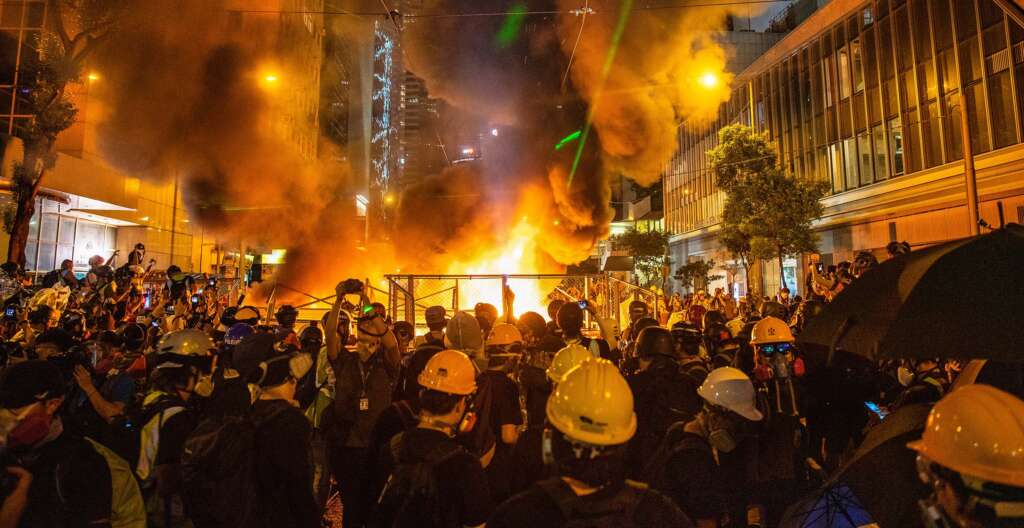
From this point onwards, street protests became increasingly violent; they were almost daily events with widespread destruction of public facilities and private businesses. The Police Force itself became the target of attack. It was no longer possible for the force to maintain law and order by simply relying on uniformed officers. Special units had to be mobilized, with protective gear offering flame resistance, elbow pads, knee pads, reinforced helmets, etc.
SPECIAL POLICE UNITS: IDENTIFICATION
A new system of identification was introduced with two purposes in mind: better working arrangement between different police units, and at the same time identification by the public of individual officers in case of complaints against the police. This took the form of what were called Blue Cards. These were stiff cards placed in a plastic sleeve containing information sufficient to identify the unit concerned. It would, for instance state: “ C T3 Coy 2ic” standing for “Central District Tier3 Company, second-in-charge”.
At the back of the helmet worn by officers would be a letter of the alphabet identifying the particular officer in that unit. In addition there was a Headquarters Field Operational Support Team responsible for maintaining a daily record of team call-signs and the alphabet letters assigned to individual officers as well as their names, unit identification numbers and rank. This allowed individual officers to be traced where necessary.
What is stated above are facts beyond dispute in the five cases concerned.
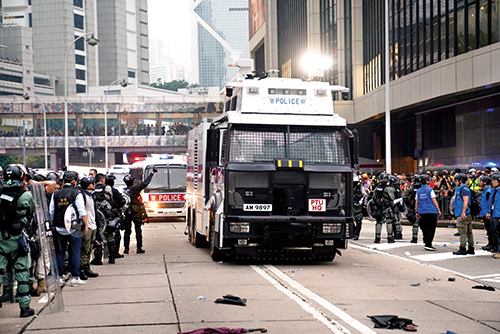
THE JUDGE’S APPROACH
The judge, Anderson Chow J, introduced the matter thus:
“There are five applications for judicial review before the court. In each of them, the issue is raised as to whether officers of the Hong Kong Police Force …..are required to display their unique identification numbers …. or other distinctive identification numbers or marks when carrying out non-covert duties in relation to the recent public order events ……”.
The “non-covert duties” referred to by the judge were anti-riot operations being carried out by special units of the police code-named TIDERIDER.
He answered the question by saying: Yes, there was, he concluded, such “requirement”; and the “requirement” was not sufficiently fulfilled; hence it violated BOR3.
THE JUDGE’S DECLARATION: VIOLATION
He accordingly made the following declaration (at the end of a 66-page judgment):
“The failure of the Commissioner to establish and maintain an effective system to ensure that every police officer deployed in carrying out non-covert duties in Operation TIDERIDER wears and prominently displays an identification number or mark which is unique to that officer violates Article 3 of the Hong Kong Bill of Rights”.
Even without looking at Article 3 of the Bill of Rights, one can see there is something radically wrong with the judgment.
- What was the Commissioner supposed to do in light of this declaration?
- Was it for the judge to meddle in such practical matters?
- What does “prominently” displaying an identification number or mark mean?
- In what way was the system deficient?
- What would constitute a better system, if Blue Cards identification and the other matters in place were not sufficiently “effective”?
- By what criteria does the judiciary decide “effectiveness”?
- How would the Commissioner know if changes to identification satisfied the judge’s requirements?
The judge saw these matters through the lens of European human rights jurisprudence rather than apply plain practical common sense to the issue.
THE VIOLATION OF ARTICLE 3
As can be seen, the declaration was no more than a puff of hot air. No effective practical consequences ensued, or could ensue. But when one turns attention to the juridical basis for the judge’s declaration – violation of Article 3 of the Bill of Rights – one’s breath is simply taken away.
This is what the article says:
“Article 3: No torture or inhuman treatment and no experimentation without consent.
No one shall be subjected to torture or to cruel, inhuman or degrading treatment or punishment. In particular, no one shall be subjected without his free consent to medical or scientific experimentation”.
Full stop.
There is no ambiguity in this article. It deals with the extremes of inhumanity and degradation practised by persons in authority or regimes in power. The rights stated there are absolute: that is to say, come what may, people must be protected against such matters by law. The meaning comes from the words themselves.
Article 3 absolutely prohibits systemic maltreatment of an extreme kind; such as knowingly inflicting severe pain, intentional degradation of the human condition etc.
How could Article 3 possibly apply to the Commissioner’s system for identifying officers involved in operation TIDERIDER?
The judge’s declaration is beyond bizarre.
SYSTEM FOR INVESTIGATING COMPLAINTS
Turning to the other limb of this case – the system in place for investigating complaints against the police – the facts, again, are not in dispute.
At the beginning of his judgment (para 16) the judge said that the applicants, in launching their proceedings, had made allegations of “ill-treatment”, in different ways, against individual officers but he, the judge, had ruled that judicial review was inappropriate for resolving “substantial disputes of primary facts”. He could only deal with the matters raised as ones of principle.
Hence, in paras 46-64, the judge set out in detail the “two-tier mechanism for handling complaints against police officers”.
There is, in the first place, the Complaints Against Police Office (CAPO) headed by a Senior Superintendent. “The majority of CAPO officers have undergone training courses from which they acquire the necessary investigation skills and capabilities. They are experienced in conducting general police investigation, as well as investigation of complaints against police officers” (para 50).
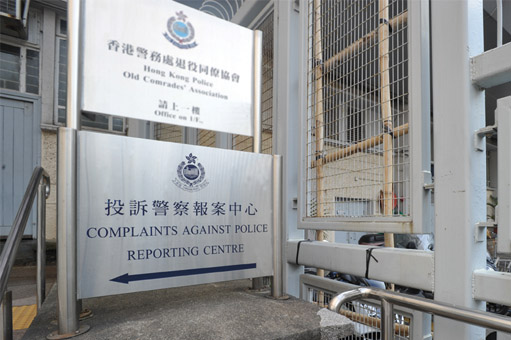
Supervising the work of CAPO is a statutory body, the Independent Police Complaints Council (IPCC). As described by the judge, IPCC “is an independent body which is neither servant nor agent of the Hong Kong Government.” Its members were “drawn widely from society, including the legal, medical, healthcare, education, social welfare, communications and business sectors, and Legislative Council members” (para 58).
IPCC had wide powers and had set up an “Observers Scheme” under which its members could attend interviews and observe the collection of evidence in connection with CAPO investigations, either on a surprise or pre-arranged basis (para 62).
On its face, the arrangement appears more than adequate. At one stage of his judgment the judge himself seems to think so, for in para 45 he said:
“Notwithstanding the label—two-fold system of identification—given by Mr Kenneth Lee [Chief Inspector of Police] to describe the methods and inquiries used or made by CAPO for the purpose of identifying an officer against whom a complaint has been made, it seems to me that they are no more than the sort of methods and inquiries that one would reasonably expect would be used or made by any conscientious body tasked with the duty of investigating complaints against police officers”.
THE JUDGE’S DECLARATION
How then did the judge come to make the following declaration with regard to this issue?
“The Government of the HKSAR is under a duty, pursuant to Article 3 of the Hong Kong Bill of Rights, to establish and maintain an independent mechanism capable of conducting effective investigation into complaints of suspected ill-treatment by police officers in contravention of Article 3 of the Hong Kong Bill of Rights, and that the existing complaints mechanism involving the Complaints Against the Police Office, with oversight by the Independent Police Complaints Council, is inadequate to discharge this obligation”.
Here the reader enters into an illusionist’s world where black can be turned into white, monsters into angels.
As will be recalled, BOR3 absolutely prohibits torture and inhuman or degrading treatment.
What, one might ask, has that got to do with the arrangement for dealing with police complaints? Has the Commissioner set up torture chambers to interrogate complainants?
The answer – if that is the right word – lies in the convoluted logic flowing from what the judge called “Strasbourg jurisprudence”.
But why the judge thought it necessary to resort to Strasbourg jurisprudence in the first place is a mystery, since BOR3 is an article in a Hong Kong statute, and there is no ambiguity in its wording.
STRASBOURG JURISPRUDENCE
Be that as it may, the judge said (para 68) that Article 3 of the European Convention on Human Rights (ECHR3) is “materially” the same as BOR3.
But it is not.
As explained in the case of Bouyid v Belgium (2016) cited by the judge:
“ …..any interference with human dignity strikes at the very essence of the Convention … For that reason any conduct by law-enforcement officers vis-à-vis an individual which diminishes human dignity constitutes a violation of Article 3 of the Convention. That applies in particular to their use of physical force against an individual where it is not made strictly necessary by his conduct….”.
Nothing in Hong Kong’s BOR3 suggests that it provides for protection of “human dignity”: a far more illusive concept than protection against torture, etc. To suggest that BOR3 protects “human dignity” is to trivialise that Article. By adopting that kind of interpretation, clarity of words is lost. Their hard edges get blunted. They slide into a grey zone where black can become white, and the difference between night and day is blurred under the influence of Strasbourg jurisprudence.
Further, as can be seen, Bouyid v Belgium was concerned with a case of actual police maltreatment: it was against such background that arrangements in Belgium for dealing with complaints were judged.
But, as mentioned earlier, Chow J specifically ruled out any attempt to judge the veracity of the applicants’ complaints of maltreatment in the cluster of cases before him. He said this was inappropriate in judicial review proceedings, and applicants should pursue their complaints in civil suits for damages. So, throughout the hearing before him, the allegations of maltreatment remained just that, allegations; nothing more.
It was here that the judge, perhaps befuddled by Strasbourg jurisprudence, totally lost the plot. After referring to the inappropriateness of adjudicating on the allegations of police maltreatment made by the applicants, he said this (para 77):
“What is clear, however, is that there are many instances of arguable claims of use of unnecessary or excessive force or application of ill-treatment by police officers which, if proved, would constitute breaches of BOR3 such that the positive investigative duty on the part of the Government is triggered.”
“Arguable claims”?
Applying the judge’s logic, a mere allegation of maltreatment becomes an “arguable claim”: just as protection against torture, etc, in BOR3 slides into protection of “human dignity”. This is what happens when human rights in Hong Kong are examined through the lens of European jurisprudence.
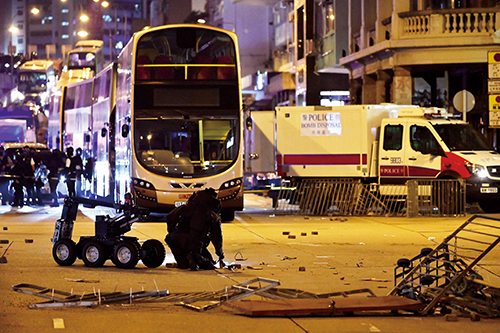
Do police officers have human rights?
The judge cited numerous European cases on protection of individuals’ human rights, but forgot that police officers also have human rights. The two-tiered mechanism provides an outlet for public complaints against the police, but also protects the police from ill-founded or malicious complaints. If “human dignity” were in issue, the police are as entitled to protection as complainants in that regard.
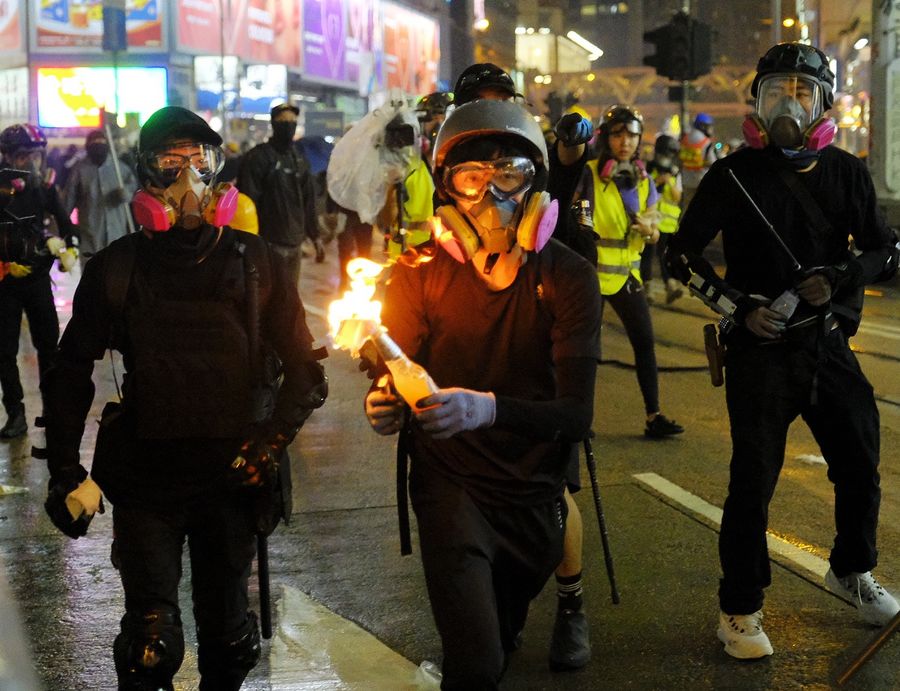
In some of the European cases, there were findings of ill-treatment by police officers; here there were none.
The sole issue before the judge was whether the arrangement for dealing with complaints against the police violated BOR3. The judge cited numerous pronouncements of the Strasbourg Court and other overseas bodies, and from them derived this proposition: that a “positive investigative duty on the part of the Government was triggered”.
One is tempted to say: “So what?” Surely the whole purpose of the two-tiered mechanism was precisely to discharge a “positive investigative duty”. Why did it need big words and overseas cases to say the obvious? But from this the judge made a Tarzan leap into the declaration he pronounced. It is an assertion of raw power. There is no logic in this.
CONCLUSION
Rule of law requires discipline. If plain meaning is not to be given to plain words in the Bill of Rights, or in other statutes for that matter, and judges are permitted to extend their meaning to fit the desired social outcome, it is no longer the rule of law. For how is the ordinary citizen to abide by the law if the meaning of words is so illusive? It becomes rule by judges. It is a form of tyranny in disguise.
The judge made two empty declarations in this cluster of cases. Sixty-six pages of impenetrable text which no one could understand, however conversant he or she might be with English. Is this “transparency” in the administration of justice?
The irony is that, although in theory the applicants had won, they gained nothing from the process.
Once more, it was the human rights industry who were the real winners.
The Honorable Henry Litton was Permanent Judge of the Court of Final Appeal in Hong Kong from 1997 to 2000.
He has written a number of articles on this theme. To see all of them, click here.

